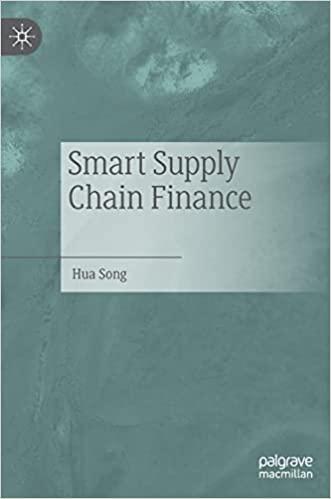Question
1) Which of the following statements about equity is incorrect? a) Value stocks are the firms with low book-to-market ratios and growth stocks are the
1) Which of the following statements about equity is incorrect?
a) Value stocks are the firms with low book-to-market ratios and growth stocks are the ones with high book-to-market ratios
b) Public equity is more liquid, more transparent, and less flexible in its price compared to private equity
c) The price of a stock is reflected in the market value of a company, not its book value
d) Firm overview, product demand, product costs and pricing environment are among the elements that should be included in company analysis 2) Which of the following is/are true about the Excel NPV() formula?
I. It requires us to specify the interest rate per period
II. The series of cash flow must be equally spaced in time
III. It requires the specification of discount rate per period a) I only
b) I and II
c) II and III
d) II only
3) Which of the following is true about bonds?
a) None of the listed choices
b) All bonds traded at a discount to par make periodical semi-annual interest
c) Only governments and central banks can issue bonds
d) Whether a bond is trading at a premium to par, a discount to par, or at par depends on both its price and the par value
4) Your years starting a year from now and the return is 8% per year. Your calculation shows that you will accumulate $5,866.60 at the end of 5 years. Which of the following Excel formula is applicable for this calculation?
a) The NPV() formula
b) The FV() formula
c) The PMT() formula
d) The PV() formula
5) Which of the following statements about the time line method is incorrect?
a) It clearly shows what an investment is worth at a specific point of time
b) It is very useful in solving a time value of money problem
c) It reflects what point in time each cash flow occurs
d) A timeline can be drawn from the point of view of only one entity
6) An interest rate can be interpreted as:
a) a required rate of return
b) all of the listed choices
c) the opportunity cost of consumption
d) a discount rate
Step by Step Solution
There are 3 Steps involved in it
Step: 1

Get Instant Access to Expert-Tailored Solutions
See step-by-step solutions with expert insights and AI powered tools for academic success
Step: 2

Step: 3

Ace Your Homework with AI
Get the answers you need in no time with our AI-driven, step-by-step assistance
Get Started


